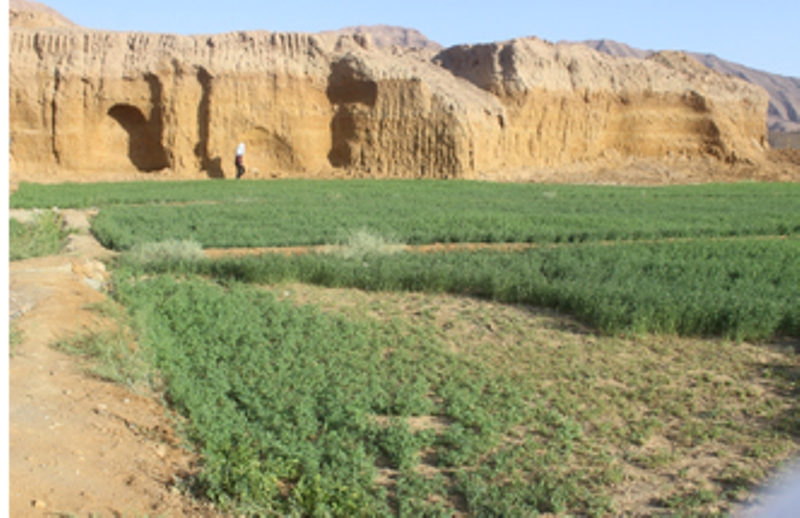
According to the Public Relations Office of the Research Institute of Cultural Heritage and Tourism (RICHT), Bahram Anani, head of the probing team to determine the limits and propose the privacy of the Bokanda area in Tabas, said on Wednesday that most of the pottery are made by wheels and are of the new type bronze.
Anani stressed that although it is still not possible to talk about the type of the settlement, however, it seems that the team would be faced we a cemetery in that place.
The archeologist, referring to the abundance of the dispersion of the Islamic pottery on the margins of the hill, said the pottery mostly belong to the 7th to 11th centuries Hegira.
Referring to the location of Bokanda (Bokando) area in the village of Pir-e Hajat in the northwest of Tabas, he said at present the population of the village is 117 people, most of whom are above 50 years old.
He said lack of facilities and employment opportunity and also the distance from the city of Tabas and other cities are the reasons for the migration of the rural youth, adding that the village was located in a mountainous region with a favorable climate compared to Tabas and because of the location of an Imam Zadeh known as Ahmed bin Ishaq, in some days of the year tourists would visit the area.
Anani further remarked that the drinking and the agriculture water of the village are maintained from a spring in the surrounding mountains which has now been transferred to the village.
He also pointed to the flow of a river from the north and the west of the village which was full of water up to a decade ago but now has been dried up.
Anani also referred to the transfer of parts of the soil after the leveling, together with the soil transferred from other area into the river in order to make more land, said at present there is more land in that part of the river.
He continued by pointing to the surrounding of the eastern and southern part of the area by agricultural lands as well as rocky mountains behind the agricultural lands as another natural factor in the southern part of the site.
However, he added, the entire lands together with the main hill are in the possession of one of the inhabitants of Pir-e Hajat.
The archeologist noted that at present the main hill has been severely damaged due to agricultural and livestock activities and has been divided into the two northern and southern hills.
9376**1397
Follow us on Twitter @IrnaEnglish
 solhkhabar | Peace International News Agency Peace International News Agency , Peace News , International Agency News of Peace
solhkhabar | Peace International News Agency Peace International News Agency , Peace News , International Agency News of Peace